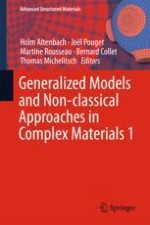This book is the first of 2 special volumes dedicated to the memory of Gérard Maugin. Including 40 papers that reflect his vast field of scientific activity, the contributions discuss non-standard methods (generalized model) to demonstrate the wide range of subjects that were covered by this exceptional scientific leader.
The topics range from micromechanical basics to engineering applications, focusing on new models and applications of well-known models to new problems. They include micro–macro aspects, computational endeavors, options for identifying constitutive equations, and old problems with incorrect or non-satisfying solutions based on the classical continua assumptions.
